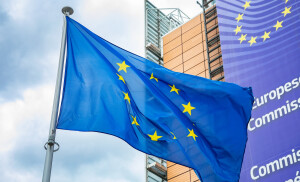 For several years, the Agricultural and Rural Development Council of the European Union (EU) has been working on a new set of labeling laws for wine and aromatized wine products. These laws—which are in effect as of December 8, 2023, and will apply to all wine released in the EU as of the 2024 vintage—are meant to provide consumers with additional information on a wine’s nutritional value and the ingredients used in the production of the wine.
For several years, the Agricultural and Rural Development Council of the European Union (EU) has been working on a new set of labeling laws for wine and aromatized wine products. These laws—which are in effect as of December 8, 2023, and will apply to all wine released in the EU as of the 2024 vintage—are meant to provide consumers with additional information on a wine’s nutritional value and the ingredients used in the production of the wine.
- For context, EU wines have always required the following information to be declared on wine labels, and will continue to do so:
- The designation of the category of grapevine product (type or style of wine product)
- The region of origin, which may be an appellation or simply indication of provenance
- ABV (alcoholic strength percentage by volume)
- The name of the bottler, producer, or vendor
- Net contents
- For sparkling wines, sugar level/content
- Under the new laws, the following information must also be clearly stated on the wine label:
- List of any ingredients that may cause allergies or intolerances; these include sulfites, eggs and egg-based products, milk and milk-based products
- Under the new laws, the following information must be declared; however, it may be stated on the wine label OR available via electronic means such as a QR code:
- Nutritional values including average values of energy (calories) as well as the amounts of fat, saturated fat, carbohydrates, sugar, protein, and salt.
- List of ingredients, presented in descending order of weight, as recorded at the time of their use in the manufacture of the product. (Ingredients that make up less than 2% of the finished product may be listed in any order.) Additives must be listed according to the functional category, such as acidity regulators, preservatives/antioxidants, enrichments (such as concentrated grape must), or stabilizing agents. Yeast and alternative gases (as may be used in bottling) are considered processing aids and do not need to be listed as an ingredient.
- Use-by date for de-alcoholized products
These rules—which in their current incarnation far exceed the labeling declarations required of wines produced or distributed in the United States—will apply to all wine (including American wine) distributed in the European Union.
References/for more information:
- EU Commission Notice regarding new wine labeling laws
- New EU Labeling Rules for Wines _Brussels USEU_European Union_01-05-2022
- https://agriculture.ec.europa.eu/news/new-rules-wine-labelling-enter-application-2023-12-07_en
Post authored by Jane A. Nickles…your blog administrator: jnickles@societyofwineeducators.org